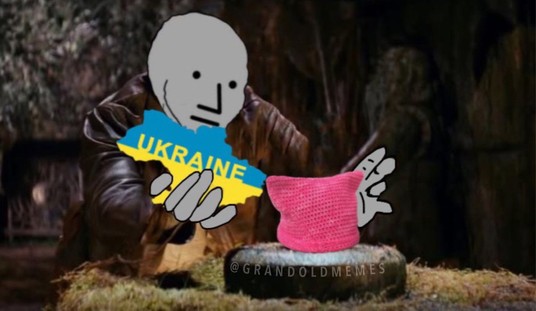Ripples in the Dark
Picture two faucets dripping into a still sink simultaneously. Watch the ripples spread, collide, and create a pattern, with some waves stacking up tall and others canceling each other out altogether.
Now imagine turning off the water and tossing in one droplet at a time, and still, those same ripple patterns appear, without tricks or cheating. Just a single drop at a time, slowly building the same interference pattern.
That’s the double-slit experiment.
Using light, it was first demonstrated in the early 1800s, and it has become the closest thing to a magic trick in all of physics. Every time scientists sneak behind the curtain, the trick becomes smarter. Each time we change how it's measured, its behavior changes.
And, yet once again, it just did.
A 200-Year-Old Mystery, Reloaded
Weeks ago, an MIT team pulled off the most precise version of the double-slit experiment ever attempted. Instead of cutting holes in a screen, they lined up 10,000 identical atoms, each acting like a tiny version of a slit, and fired single photons at them one by one. Like always, if they didn't observe which atom scattered each proton, a gorgeous wave pattern appeared.
However, when the scientists attempted to gather even the tiniest bit of information about the photon's path, whether it passed through one atom after another, the interference faded. Yet, the more information we see, the fewer patterns we find. But, it was a clean, modern confirmation that one of Albert Einstein's (yes, that Einstein) favorite objections doesn't hold up.
Anybody who studied quantum physics wouldn't be surprised, but it took a clean, modern confirmation that one of Mr. Einstein's favorite objections didn't hold up.
Einstein’s Bet… and Why He Lost It
Einstein never liked the idea of reality shifting, whether or not you were looking at it.
Way back in the 1920s and 1930s, Einstein proposed that you could gently measure the recoil of one of the slits. If you could catch the slightest nudge, you'd know which slit the proton traveled through, yet preserve the wave interference on the screen.
Niels Bohr, Einstein's counterpart, said nope: The moment you try learning the path, the wave pattern is lost. There is a tradeoff, not because the proton becomes shy or even disappears, but because the mathematics of the quantum world won't allow both truths to coexist in the same room at the same time.
The MIT crew proved Bohr right.
Again.
Einstein's old thought experiment finally received its overdue real-world trial.
But it didn't work.
What They Did Differently This Time
For those of us who don't travel in physics circles, the double-slit experiments aren't anything new. This one, however, stands out because it strips away nearly every excuse or interference.
- Single atoms, single photons: Each photon had only one atom to scatter off of, no extra confusion from complicated barriers.
- Laser lattice: The atoms sat in a laser trap so fine-tuned it could measure when they wobbled, like listening for a piano string to vibrate.
- Rustle control: The researchers could actually loosen or tighten the laser hold. A looser grip let the atom shake more, offering a clearer idea of which one the photon touched. That sharper path knowledge wiped out the interference pattern every time.
Testing whether their own trap was causing the interference loss, the laser was shut off for a microsecond before the photon hit.
There wasn't a difference.
The pattern still depended on what you could know, rather than the gear you used.
Waves or Particles? Both… But Not at Once
Math isn't the most challenging part about quantum physics; it's the logic—or what feels like a lack of it.
Protons, along with electrons and atoms, don't behave like anything in everyday life. Left or right, it doesn't matter; they both go; they don't pass through one slit or the other; they pass through both. But ONLY if you don't check, once you try to find out which path was taken, reality splits like a coin flip. The photon becomes a particle again: One slit, one choice, no ripple pattern.
The physicists call this complementarity: wave and particle descriptions complement each other, but they are unable to coexist simultaneously. While you're chasing one side of the story, the other slips away.
Behind it all lurks something that's whispered at parties: Heisenberg's uncertainty principle. The more precise the position you know (like position), the fuzzier another becomes (like momentum). It's not a matter of better tools; it's a built-in limit with a tradeoff that isn't technological; it's woven into the universe's rules.
The Best Illusion in Science
Here's where the real head-scratcher makes its appearance. When scientists fire just one proton at a time, they still get an interference pattern after enough hits, like each particle somehow interferes with itself without a twin.
Try explaining this to your uncle at Thanksgiving, but bring crayons, paper, and puppets.
Here's one way to picture this: imagine tossing basketballs at a double doorway in the dark, but after 100 tosses, you get a zebra pattern on the wall. Each ball lands someplace specific, but, over time, the pattern builds as if the balls, somehow, knew where all the others were going.
Except for one thing: photons don't know nuth'n, and that's the point. It's not about thought; it's about choice and the information that accompanies it.
The exact moment any clue exists about which path the photon took, even when nobody checks, the outcome changes.
Not because the photon was caught, but because the potential to know its path existed. At all.
Why This Matters (Even if You Never Take Physics)
Like your cousin Larry skipping his Ritalin, science doesn't sit still. What MIT showed wasn't that quantum physics is broken; it showed how beautifully intact it remains. Einstein didn't find himself embarrassed about being wrong. Instead, he pushed questions to the extreme, until they could be tested.
This separates great minds from average minds, because it's something great minds do.
It wasn't because of trickery that Bohr won this round, but his principles continue to pass every test.
For the rest of us, we of simple minds? It means the world we live in still holds mysteries that louder voices, or sharper tools, won't solve. Some truths only reveal themselves when we stop trying to force them to look like what we want.
It's not about finding the path of a proton; it's about the learning that sometimes, knowing less lets you see more.
Final Thoughts
Things that began as a thought experiment now illuminate a lab in Massachusetts with photon tracks and atomic traps so delicate that they make spiderwebs look like scaffolding.
The appeal of a double-slit experiment hasn't been lost; it's gotten better, sharper, more precise, yet still... somehow, it's just as mysterious as ever.
We may never fully outwit it, but we keep trying, while we continue to learn about what it means to measure, observe, and perhaps, must, to understand.
Hopefully, that's enough.
Right?










